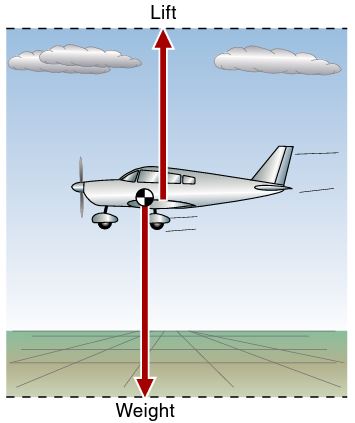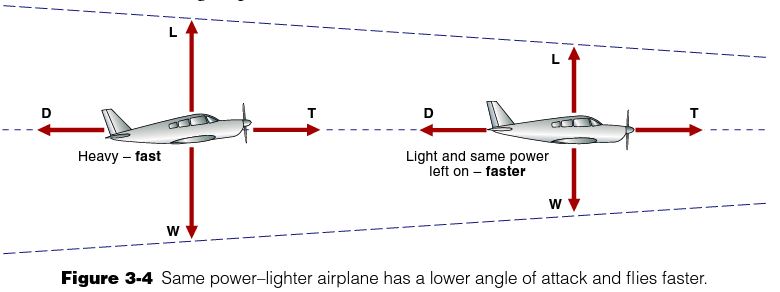So over the last two weeks while away at EAA AirVenture in Oshkosh, Wisconsin, I may have overindulged a bit too much in deep fried cheese curds. This has unfortunately resulted in a slight weight increase around my waistline and has more than likely affected my athletic performance. Not to compare myself to an airplane, but the same can be said with regards to how an increase in weight will affect the performance of an aircraft. When weight, whether it is in the form of fuel, passengers, or cargo is added to an aircraft you will start to notice a performance decrease.
To help understand this concept think back to aerodynamics and the four forces, two in particular, lift and weight. In order to climb, lift needs to exceed weight and to remain in level flight, lift will need to equal weight. So essentially, the heavier the airplane is, the more lift the wings will need to produce, resulting in a greater angle of attack, increased airspeed, or a combination of both. A maximum weight is specified for each aircraft as determined by the manufacturer. Any increase in weight exceeding this will severely diminish aircraft performance resulting in unsafe aircraft characteristics.

The Pilot’s Manual: Ground School text outlines several performance characteristics caused by a heavier airplane these include:
- a higher stall speed;
- a higher takeoff speed and a longer takeoff run;
- poorer climb performance (poorer climb angle and climb rate);
- a lower cruising level;
- less maneuverability;
- higher fuel consumption, and less range and endurance;
- reduced cruise speed for a given power setting;
- a higher landing speed and a longer landing distance; and
- greater braking requirements when stopping.
For example, a higher takeoff speed will be required to generate additional lift to counteract an increase in weight and drag resulting in a longer takeoff run. As discussed briefly above the airplane will require a greater angle of attack as weight is increased. Increasing the angle of attack will increase drag resulting in higher fuel consumption and less range and endurance. With increases in drag due to the greater angle of attack you will see reduced cruise speeds for a given power setting. This may correlate to increasing power settings to maintain specified cruising speeds contributing to higher fuel burns.

With that said, you can see how a simple change in weight will effect a myriad of other performance factors. It’s ok and perfectly safe to operate at maximum weight but as a pilot you should understand the effects and changes that weight will have on performance. You should also fully comprehend the dangers of flying above maximum gross weight.




